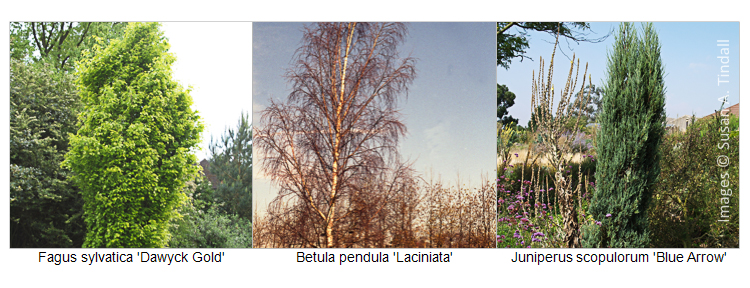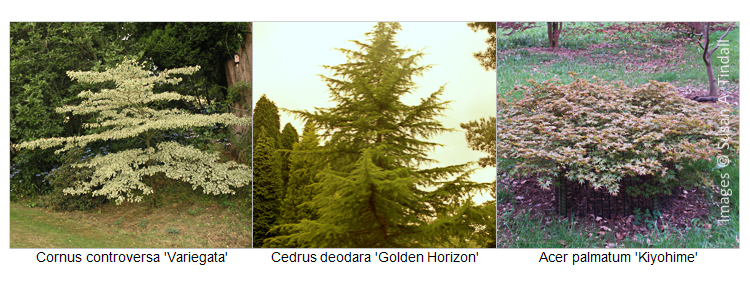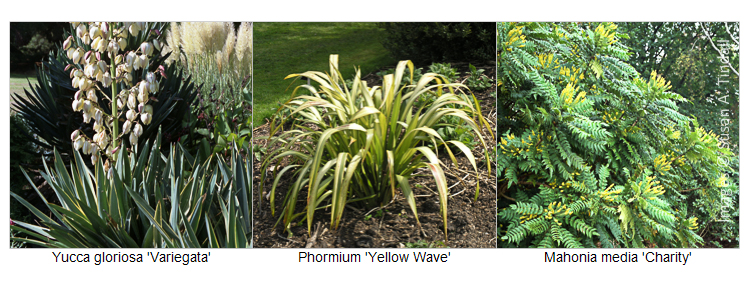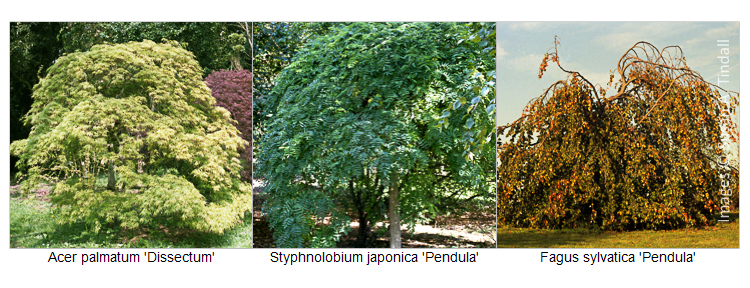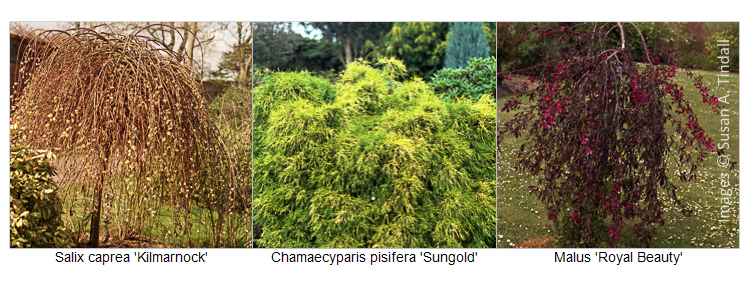These are plants, generally trees or shrubs, that are chosen to occupy significant positions or focal points. They might be placed opposite a window, on the curve or entrance to a path. They are intended to ‘catch one’s eye’ so that the natural inclination is to walk towards them, so they can guide your route around a garden. They form accent points in the same way that a belt or brooch highlight a dress.
The plants chosen for this role must have a special quality that is ideally present for much of the year. They should stand out from the crowd, and any plants that surround them should be of secondary importance. This quality is often a significant shape such as a column, weeping form, spiky or fan-shape, or horizontal growth habit. It may attract with its bark, or because of the foliage. However shapes can be the most distinctive of all. Plants are generally bought while immature, and choosing between them based on their shape at this time can be difficult. Here are suggestions of plants with significant shapes.
Columns
A group of three columnar plants can make a good feature, a single plant can sometimes look a bit odd, as though stranded. For a large garden, a coloured columnar beech tree can be first class. Try the solid Fagus sylvatica ‘Dawyck Gold’ or the delicate birch Betula pendula ‘Laciniata’. For an evergreen, ultimately reaching around 7 metres in height, and perhaps better in a group of 3, try Juniperus scopulorum ‘Blue Arrow’.
For smaller gardens the columnar berberis can be useful, though some get a bit gappy after a number of years. Try Berberis thunbergii f. atropurpurea ‘Helmond Pillar’, the tight-looking slow-growing holly Ilex crenata ‘Fastigiata’ or, for something different, a grass with a vertical growth habit, a group of Molinia caerulea subsp. arundinacea ‘Karl Foerster’ being splendid in winter.
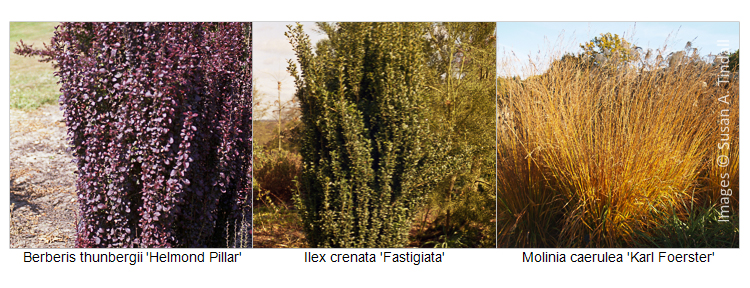
Horizontal shapes
Plants that hold their branches horizontally are supremely eye-catching, a top favourite being a variegated form of the Pagoda Dogwood, ultimately reaching around 6 metres in height, the beautiful Cornus controversa ‘Variegata’, the slow-growing Cedrus deodara ‘Golden Horizon’ or the wide-spreading Japanese maple Acer palmatum ‘Kiyohime’.
Spiky and fan-shaped
These plants often present a lively aspect, such as the spiny but dramatic Yucca gloriosa ‘Variegata’, or the softer Phormium ‘Yellow Wave’. With showy bark and autumn colour, the fan-shaped small tree Acer x conspicuum ‘Phoenix’ is eye-catching. The large and dramatic evergreen Mahonia x media forms reach around 3.5 metres in height, and flower in winter. Try Mahonia x media ‘Charity’, or for a very small space a dwarf nectarine, which may be positioned in its container as a feature plant, Prunus persica var. nectarina ‘Terrace Ruby’.
Weeping forms
Weeping trees often have the advantage of being grafted onto an upright trunk so that their vertical growth is constrained. Weeping plants can be soothing in their aspect, often looking good in the proximity of water. They come in all sizes up to the massive weeping beech Fagus sylvatica ‘Pendula’, which can cover 20 metres or more when mature. On a more manageable scale are the mushroom shaped Acer palmatum ‘Dissectum’, the curiously rigid weeping habit of the small Styphnolobium japonica ‘Pendula’, the whipcord foliage of evergreen Chamaecyparis pisifera ‘Sungold’ or the red-purple weeping crab apple Malus ‘Royal Beauty’. Finally, often only 2 metres in height, the Kilmarnock willow Salix caprea ‘Kilmarnock’ is a classic choice.
These are just a few of many possible plants that can add shape and distinction to your garden.
Enjoy!
Susan A. Tindall

